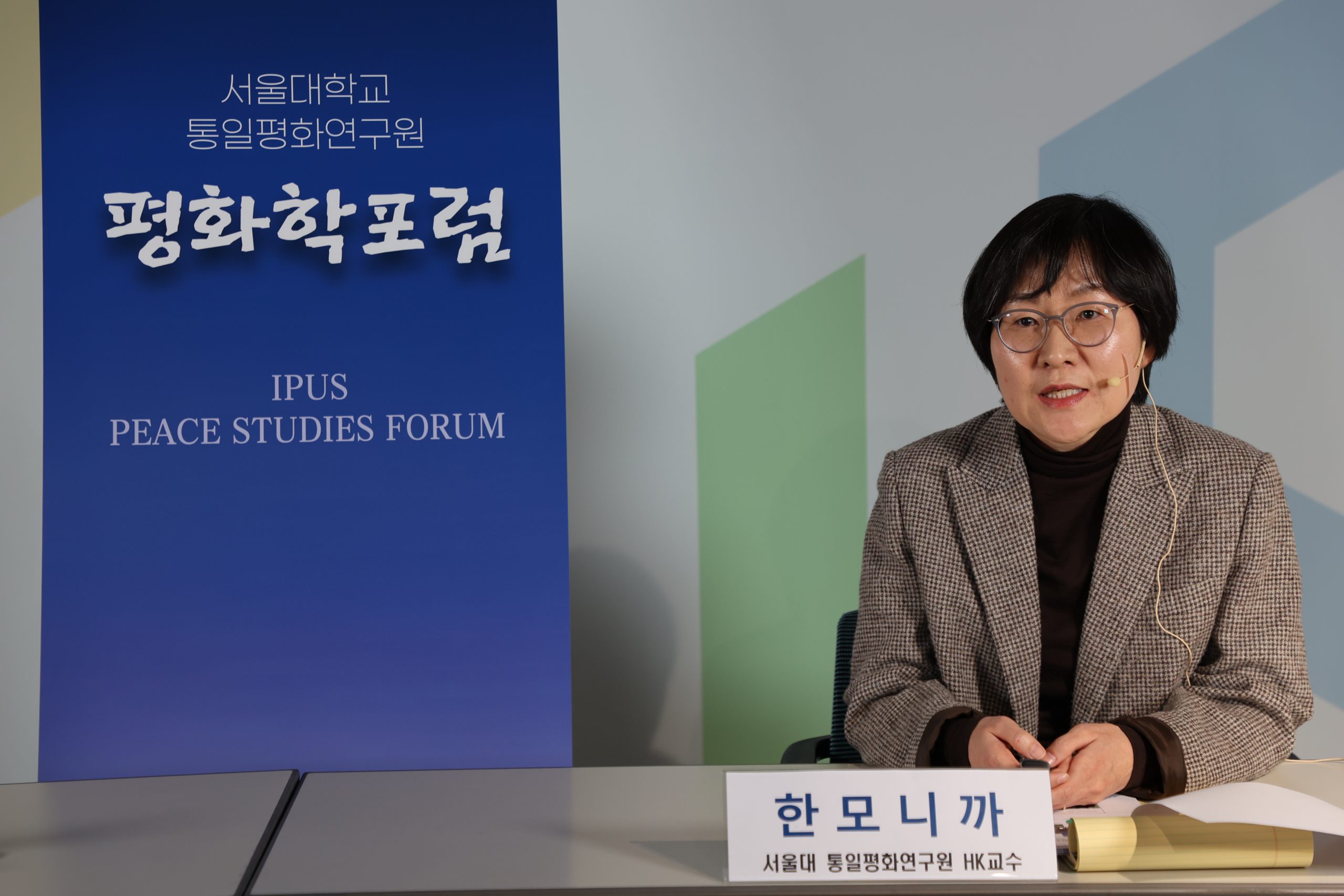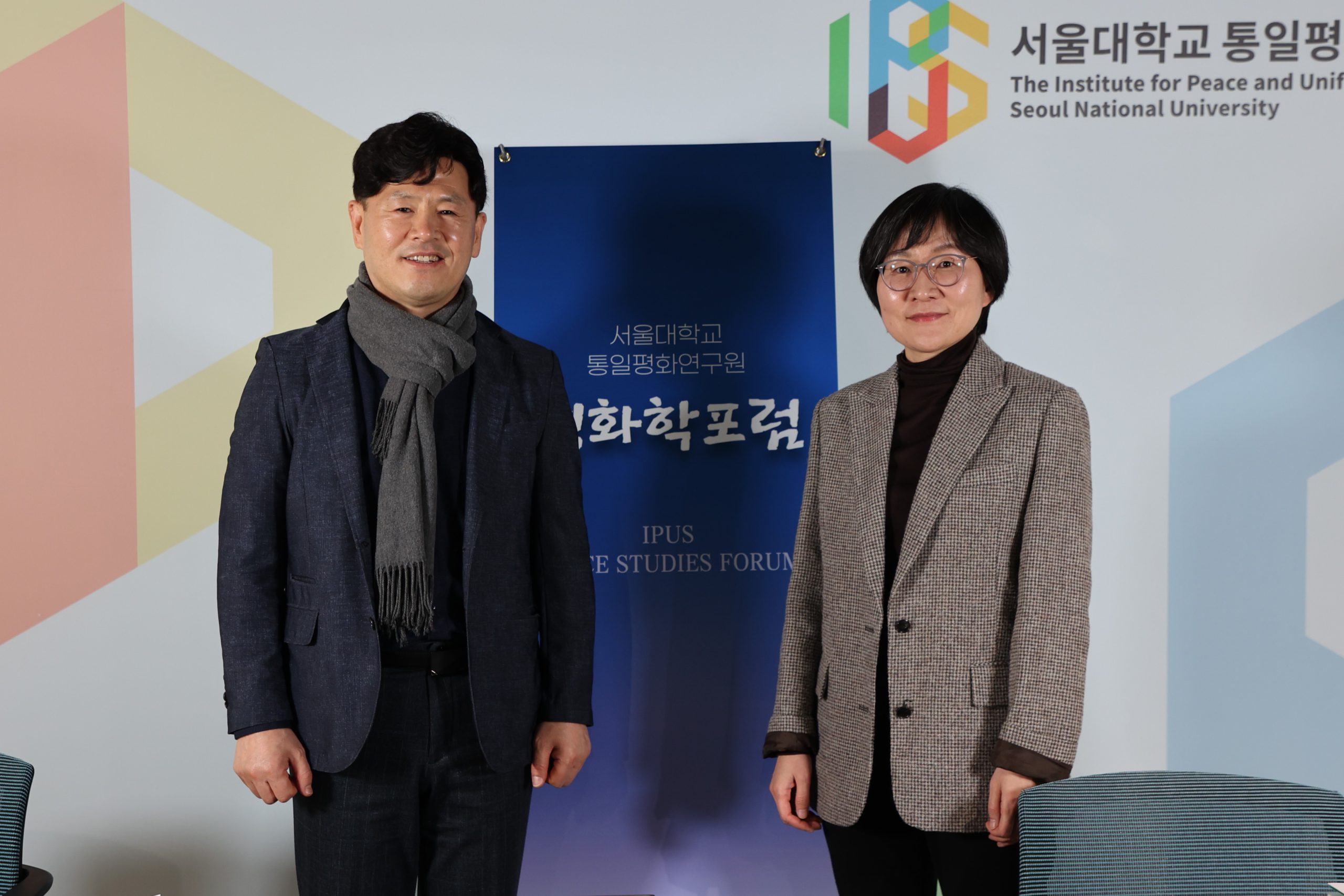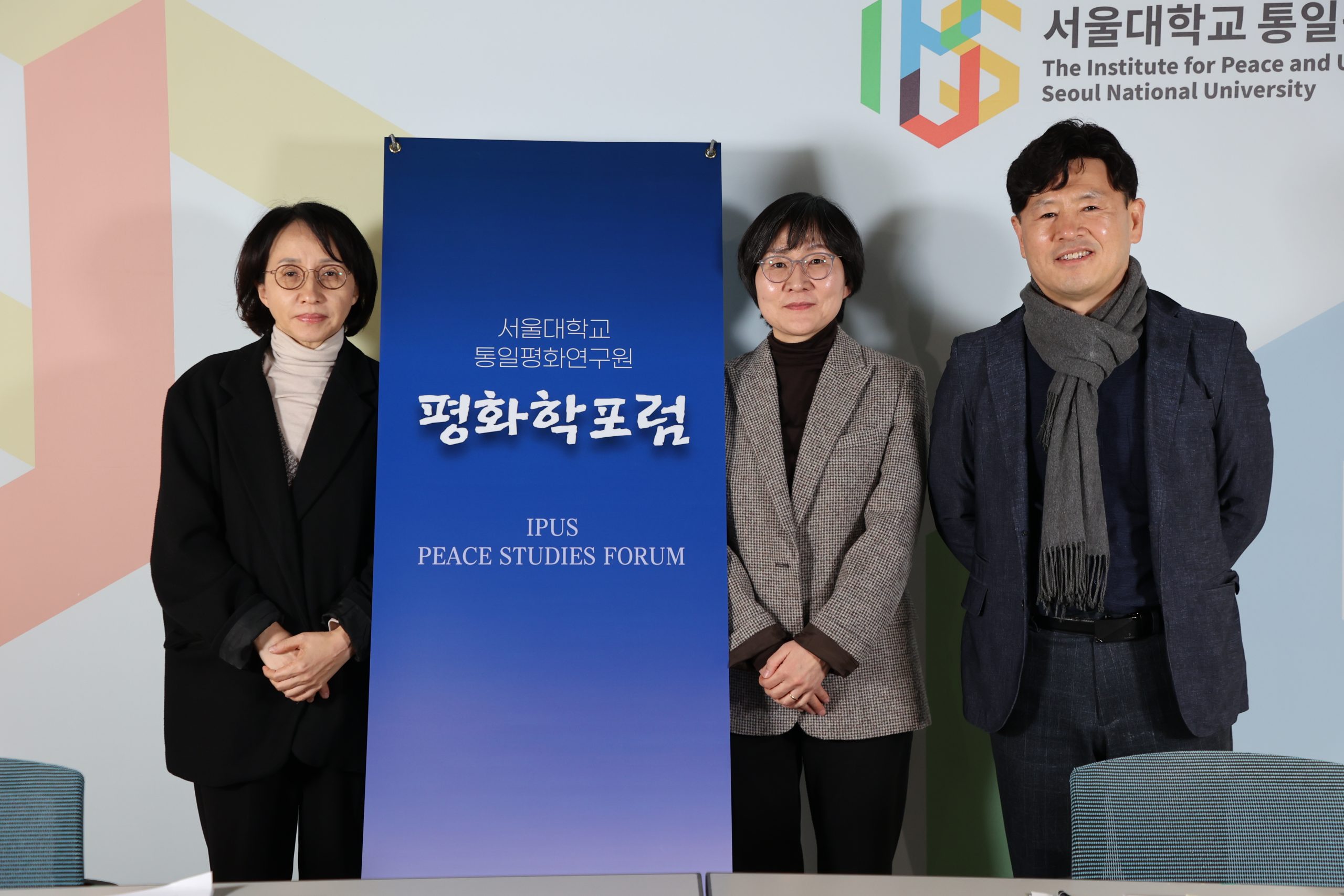[29th Peace Studies Forum] The History of the DMZ: The Korean Armistice Regime and the Demilitarized Zone
- Date: Thursday, January 9, 2025, 16:00-17:30
- Venue: Online Video Conference(ZOOM)
- Presenter: Hahn, Monica (Humanities Korea Professor, the Institute for Peace and Unification Studies at Seoul National University)
- Chair: Jeong, Han Beom (Professor, Department of Security Policy at National Defense University)
- Topic: The History of the DMZ: The Korean Armistice Regime and the Demilitarized Zone
The Institute for Peace and Unification Studies at Seoul National University (IPUS at SNU) hosted its 29th Peace Studies Forum on Thursday, January 9, 2025, under the theme ‘The History of the DMZ: The Korean Armistice Regime and the Demilitarized Zone,’ with Humanities Korea Professor Hahn, Monica from the Institute for Peace and Unification Studies at Seoul National University. The forum was chaired by Professor Jeong, Han Beom from the Department of Security Policy at National Defense University, who opened the forum with welcoming remarks.
Professor Hahn began the lecture by exploring public perceptions and experiences associated with the DMZ. She noted that for many Koreans, the DMZ is recognized as a symbolic front line and the boundary of division, often remembered through the hardships and anecdotes of military service. At the same time, she pointed out that the DMZ has been described by the BBC as one of the most heavily fortified areas in the world, reflecting its persistent military tension.
However, Professor Hahn also emphasized that the DMZ is not merely a military buffer zone. It is known internationally as a rich ecological habitat, home to numerous endangered and rare species, and is often viewed as a symbol of peace. This dual character of the DMZ—between militarization and ecological preservation—served as a starting point for her inquiry. Professor Hahn proposed that the DMZ should be understood not simply as a product of the armistice, but as a complex space shaped by international proposals, institutional negotiations, and the cumulative effects of policy implementation.
She also addressed the public’s limited understanding of the actual location and structure of the DMZ, noting that due to strict restrictions on civilian access, research on the zone itself remains extremely difficult. As a result, while studies on adjacent border areas are abundant, they are often mistakenly equated with studies on the DMZ proper, leading to the circulation of superficial or inaccurate information.
The historical origins of the DMZ were a major focus of the lecture. Contrary to popular belief that the DMZ began with the 1953 Armistice Agreement, Professor Hahn explained that the concept was first proposed in October 1950 by British Foreign Secretary Ernest Bevin, following the Chinese military’s entry into the Korean War. Britain’s proposal aimed to prevent the expansion of the war and suggested the creation of a demilitarized zone along the Korea–Manchuria border, administered by a demobilized North Korean government and military. This idea was rejected by U.S. and South Korean leadership, including General Douglas MacArthur and Ambassador Jang Myeon, but it nevertheless sparked international debate and contributed to the evolution of the DMZ concept.
As armistice negotiations progressed from July 1951, discussions regarding the DMZ’s location, scope, and governing authority intensified. The North Korean and Chinese side proposed a 20-kilometer-wide buffer zone based on the 38th parallel, with the restoration of prewar civil administration. In contrast, the United Nations Command called for a broader 32-kilometer zone further to the north. Ultimately, the DMZ was established as a 4-kilometer-wide buffer zone, based on the contact line at the time of the armistice.
Professor Hahn referenced Article 1 of the Armistice Agreement, which defines the DMZ as a mutually agreed buffer area in which both sides withdrew their forces by 2 kilometers. She also reviewed Article 13, which mandated the withdrawal of military assets within 72 hours and the removal of explosives and mines within 45 days. These provisions were implemented under the supervision of the Military Armistice Commission (MAC).
She highlighted that on November 3, 1953, the 86th Secretariat Meeting of the MAC confirmed the completion of the installation of 1,292 physical markers along the Military Demarcation Line (MDL), effectively converting the line into a series of demarcation points. She also discussed the formation of Joint Observer Teams (JOTs) tasked with monitoring violations and the logistical operations required to maintain DMZ stability in accordance with the agreement.
In the latter part of the lecture, Professor Hahn noted that despite being legally defined as demilitarized, the DMZ became heavily militarized during the 1960s. She added that in the early 1970s, proposals to transform the zone into a peace corridor began to emerge both within Korea and internationally.
Professor Hahn concluded by underscoring that the DMZ is not a static or singular result of war, but rather a multilayered space formed through the Korean War, the armistice process, subsequent militarization, and later discourses on ecology and peace. She emphasized the importance of reexamining the DMZ as a dynamic space where war was halted, the armistice maintained, and possibilities for peace continue to be negotiated.























